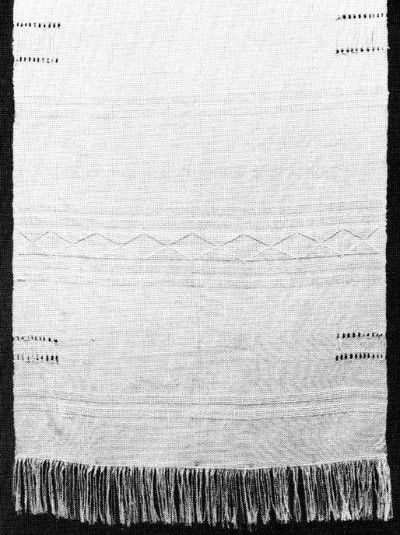Woven fabric, characterized by its interlaced construction of warp and weft yarns, is a fundamental textile used in various applications due to its durability and versatility.
| Fiber Source | Natural (cotton, wool) and Synthetic fibers |
| Weaving Patterns | Plain, Twill, Satin |
| Dominant Colors | Natural tones, adaptable for dyeing |
| Texture Spectrum | Ranges from delicate (like silk) to robust (like denim) |
| Breathability Index | High in natural fibers, variable in synthetics |
| Strength & Longevity | High overall, especially in synthetic blends |
| Maintenance Needs | Depends on the specific fiber type |
| Primary Applications | Apparel, Home Textiles, Industrial Uses |
| Ecological Impact | Lower with natural fibers, higher with synthetics |
| Major Exporters | Asia (China, India), Europe, USA |
| Comparable Fabrics | Knitted, Nonwoven |
1. Types of Woven Fabrics
Common Weave Patterns
- Plain Weave: The most basic and common type, where the weft yarn weaves over and under each warp yarn tightly.
- Twill Weave: Features a diagonal pattern, offering more durability and less wrinkling.
- Satin Weave: Known for a glossy surface, with a looser structure that can snag easily.
This is woven fabric from 1983.
Examples of Woven Fabrics
- Canvas: A strong, heavy plain weave fabric, often used in workwear and tents.
- Chino: Medium weight with a tight twill weave and slight shine, ideal for “smart casual” attire.
- Crepe: Light and summery with a slightly crinkled appearance.
- Denim: A medium-weight twill weave, distinguished by its indigo warp and white weft.
- Muslin: An affordable, plain weave fabric used for pattern testing in garment design.
- Poplin: Known for its fine weft rib, used in shirting and dresses.
- Velvet: Luxurious and soft, made on a special loom with a plain, twill, or satin weave.
2. Characteristics and Uses of Woven Fabric
Woven fabrics are renowned for their strength, making them suitable for items that undergo frequent use. They are often used in clothing, upholstery, and curtains.
They are easier to sew due to less stretchiness but require careful hemming to prevent fraying. Though not prone to shrinking, care should be taken during washing to avoid slight shrinkage.
Due to the intensive and precise weaving process, woven fabrics tend to be more expensive than knit fabrics, with costs varying depending on the fibers used.
3. Differences Between Woven and Other Fabrics
Woven vs. Knitted Fabric
| Feature | Woven Fabric | Knitted Fabric |
|---|---|---|
| Stretch | Less stretchy | More stretchy |
| Fraying | Tends to fray | Does not fray |
| Wrinkling | Wrinkles more easily | Wrinkles less easily |
Woven vs. Nonwoven Fabric
| Feature | Woven Fabric | Nonwoven Fabric |
|---|---|---|
| Fabric Structure | Made by weaving yarns together | Made from fibers bonded together, not woven |
These tables outline the fundamental differences between woven vs. knitted and woven vs. nonwoven fabrics, focusing on their key characteristics and structural differences.
4. Special Types of Woven Fabric
Research on composite structures in woven fabrics highlights the significance of delamination resistance in layered fabrics. The use of woven fabrics in composites offers unique opportunities for enhanced mechanical performance, particularly in resistance to impact and stress
Handwoven and Specialty Fabrics
- Handwoven Fabric: Made using traditional methods, often featuring unique textures and patterns.
- Stretch Woven Fabric: Incorporates elastic fibers for added stretch.
- Brushed Woven Fabric: Features a brushed surface for a soft texture.
Environmental Aspects
Innovations in the resin transfer molding (RTM) method with woven fabrics show potential for more efficient manufacturing processes, emphasizing the importance of fabric permeability in composite material production.
Woven fabrics, depending on their weave and material, can be highly breathable. Their biodegradability depends on the fiber used, with natural fibers being more biodegradable.
5. Conclusion
Woven fabric is an integral part of the textile world, offering a blend of durability, versatility, and aesthetic appeal. Understanding its types, characteristics, and uses can significantly aid in selecting the right fabric for specific applications.

